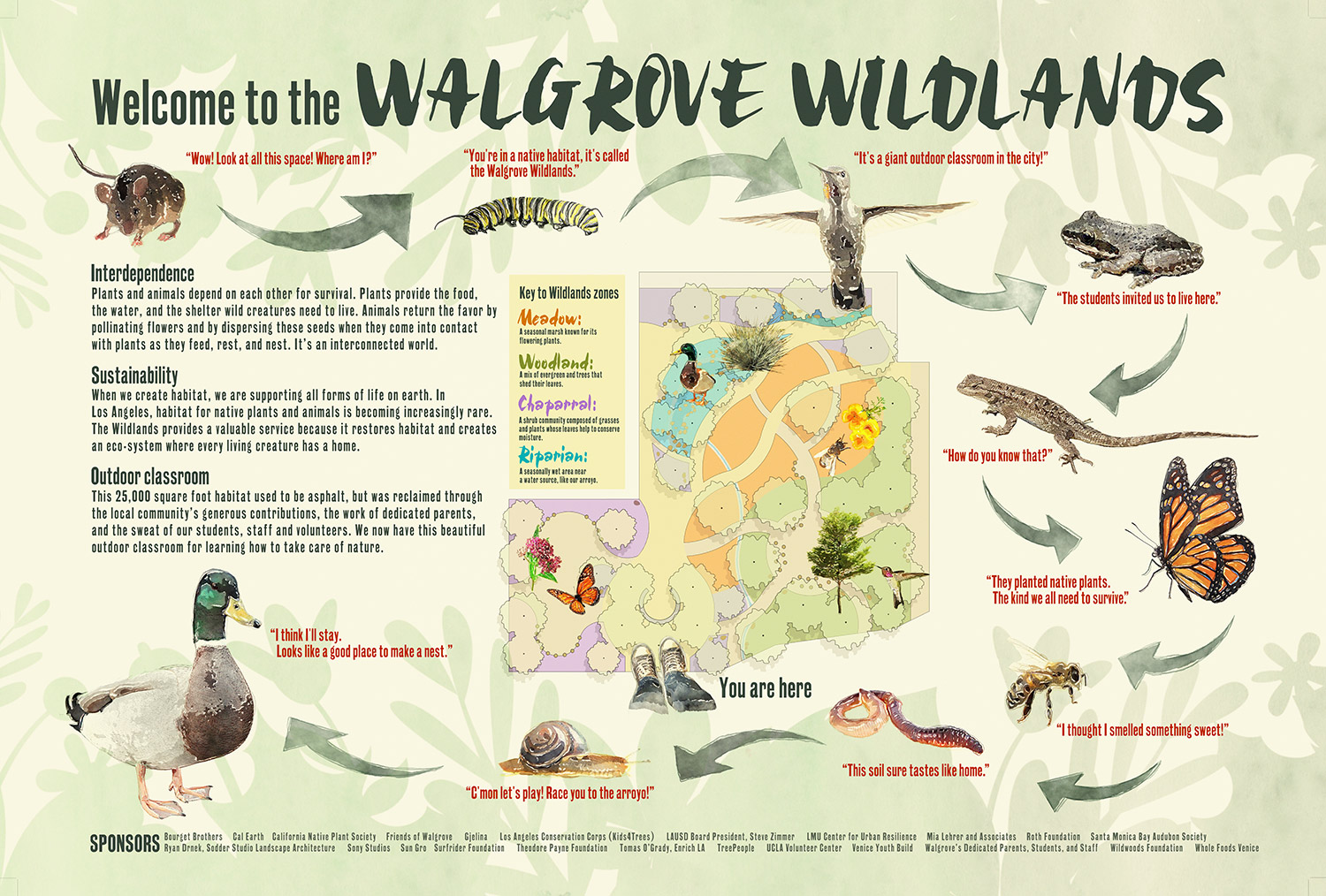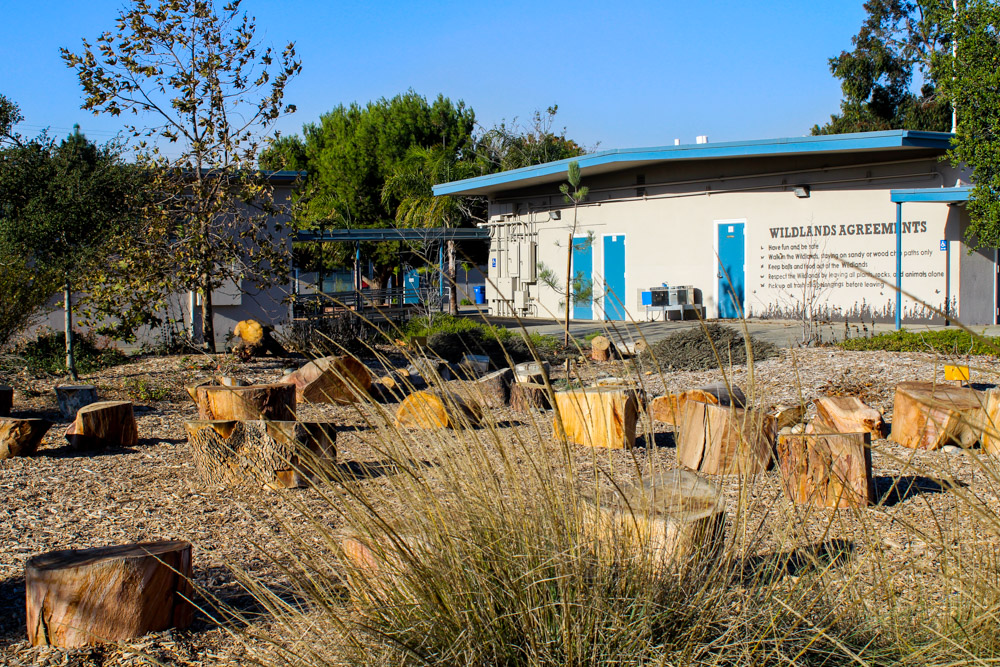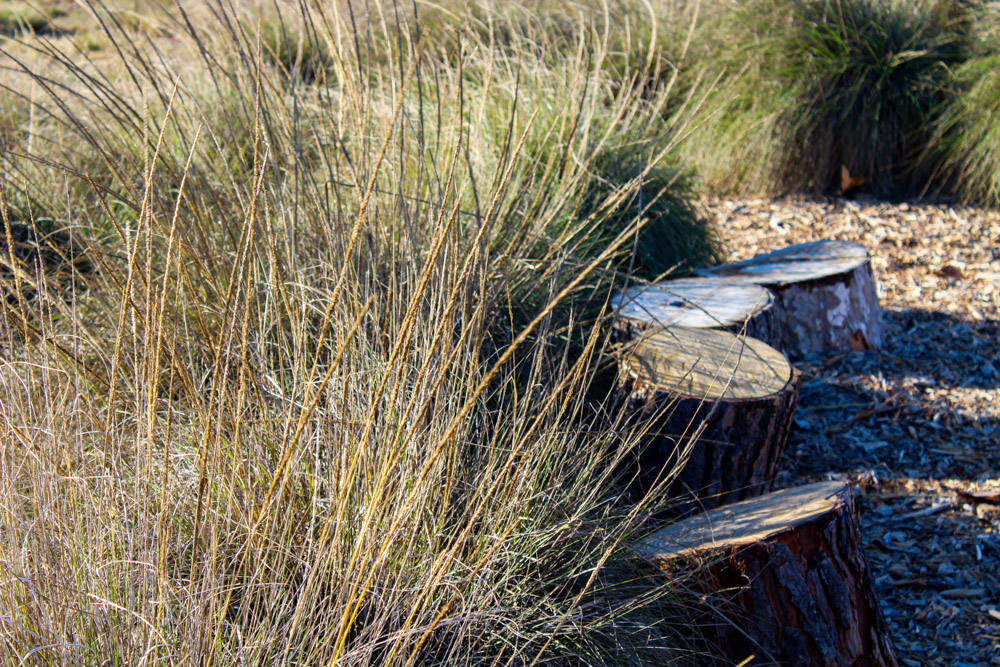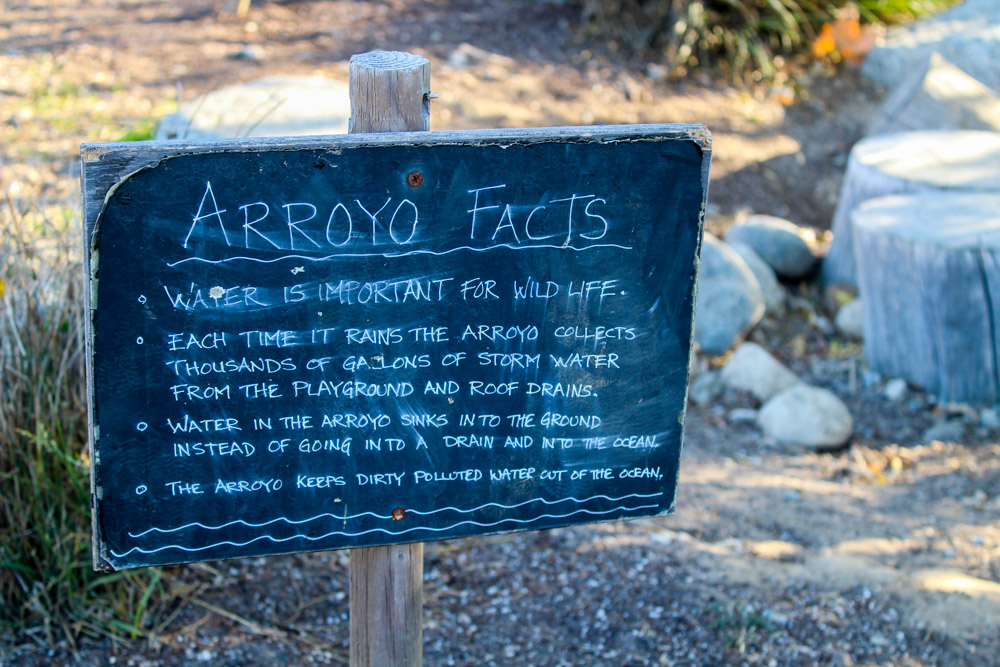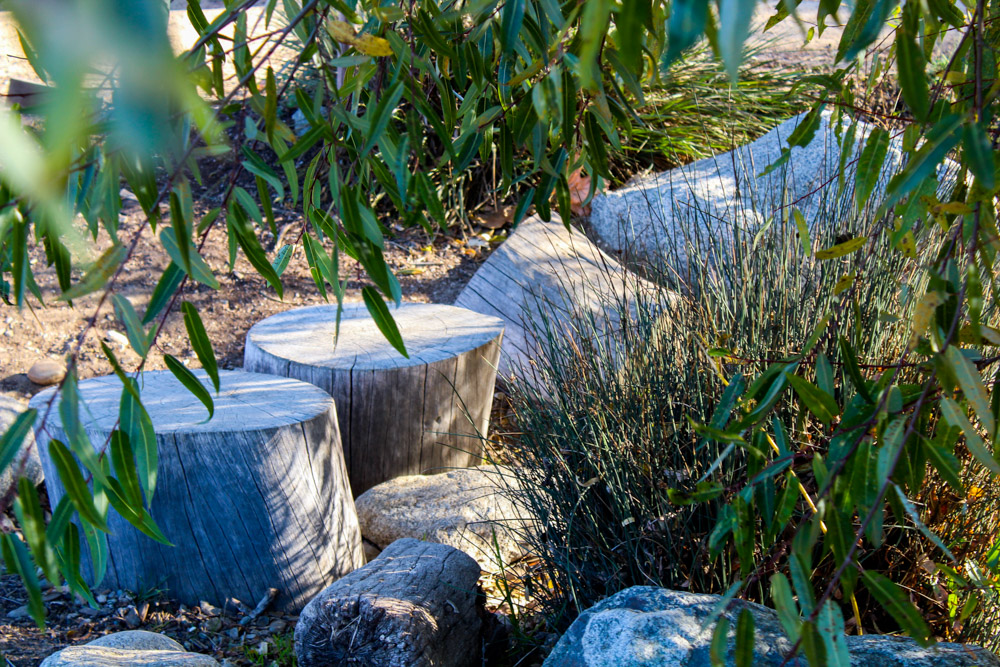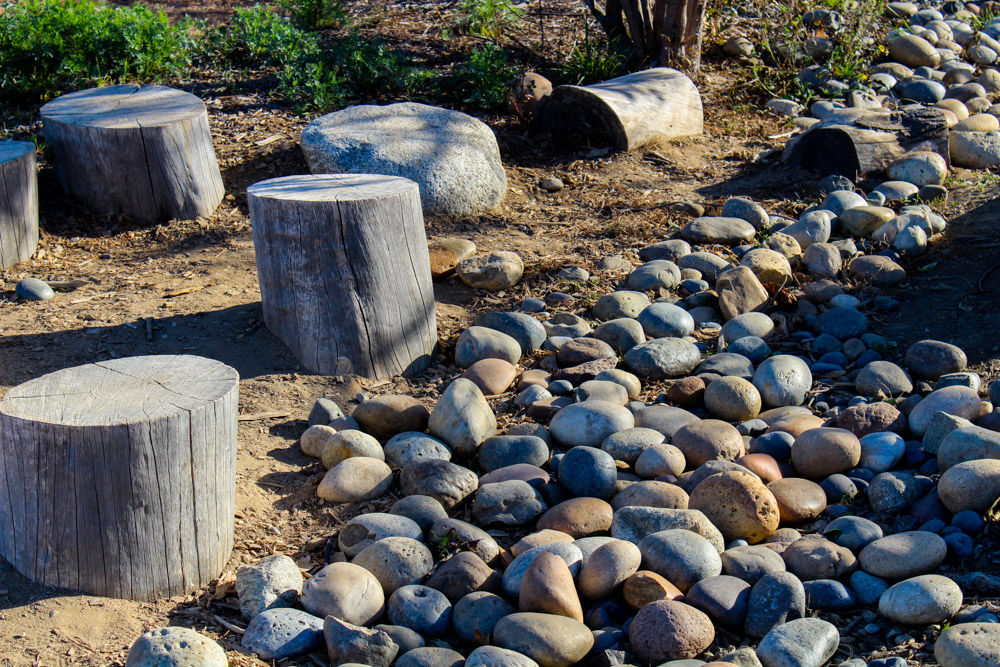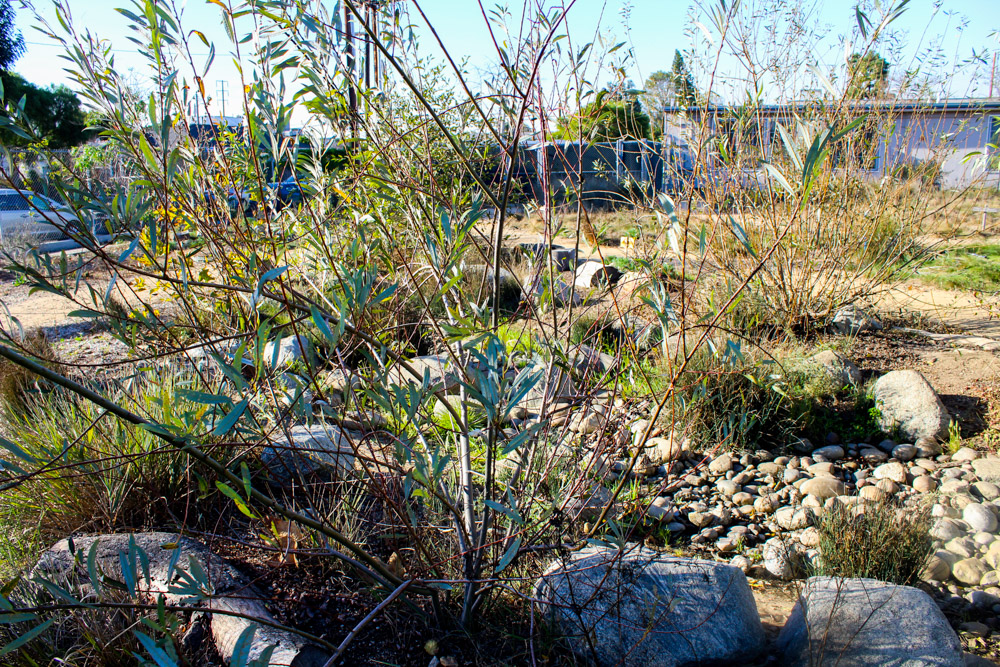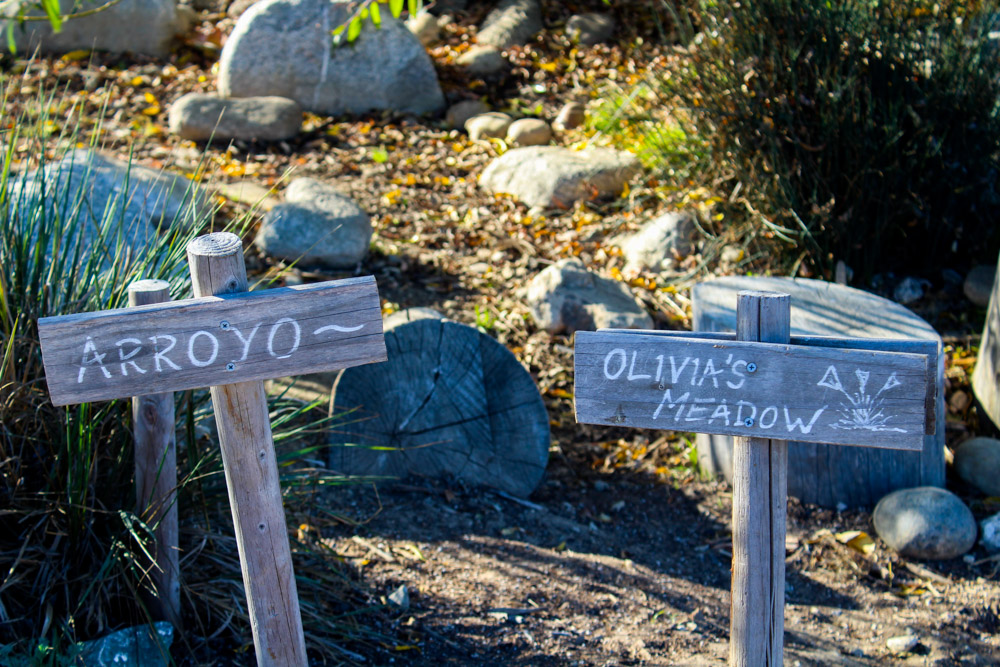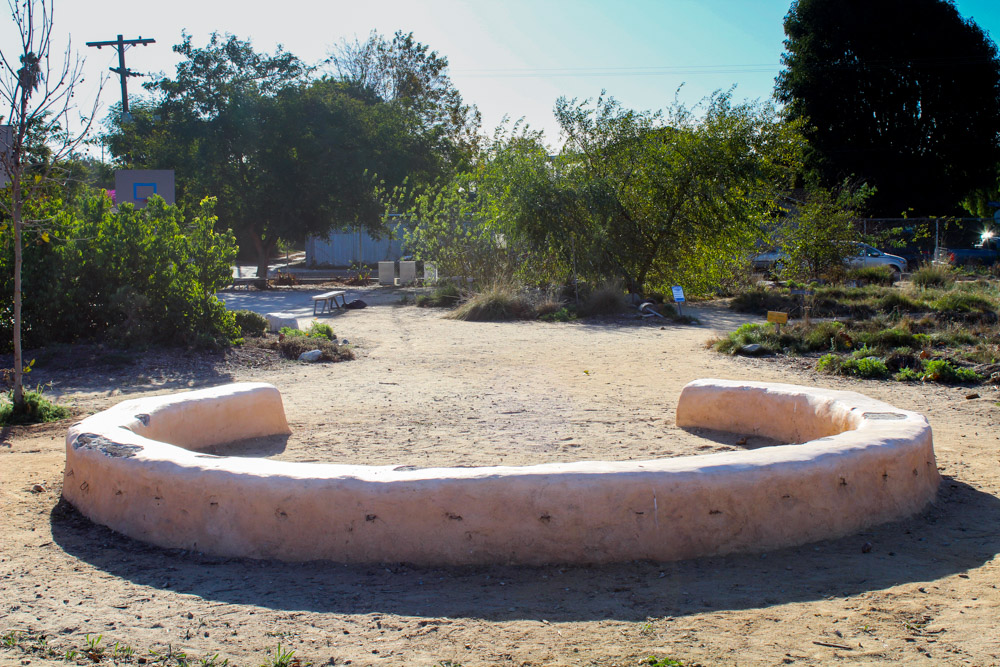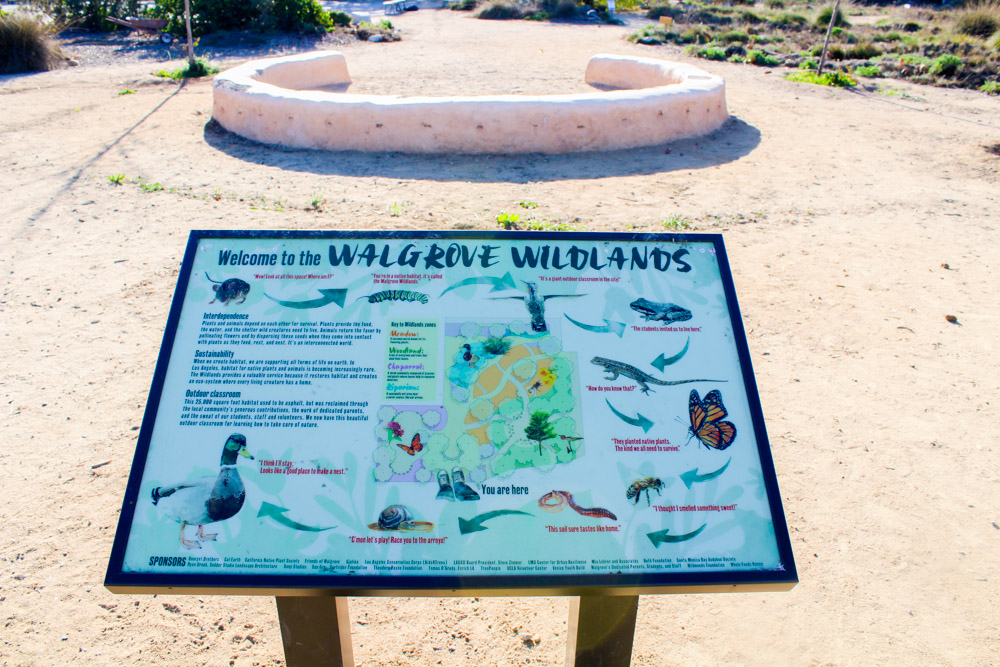About The Wildlands
The Walgrove Wildlands is an urban eco-lab, native ecosystem, and National Wildlife Federation Monarch Butterfly Way Station. Students can explore science, mathematics, writing, and S.T.E.A.M. in a constantly evolving environment.
Guiding Principles
The Walgrove Wildlands were created with the following guiding principles:
- Create a schoolyard habitat that restores native species and works towards recreating a native ecosystem on campus.
- Create a hands-on, outdoor laboratory in which students learn about science, ecology, and environmental stewardship.
- Pursue a joint-use agreement to make greened area available to the community after school hours.
- Encourage the community to take ownership of the habitat and to participate actively in its maintenance through regularly scheduled (monthly) work days.
We are excited to be part of a larger movement of school and community-based organizations across CA, the US, and world who see schoolyard habitats as powerful educational tools for enriching school landscapes and, in the process, creating exciting hands-on learning opportunities for students.
The Habitat
The native ecosystem where the Wildlands were built is known as “Coastal Sage Scrub.” Coastal Sage Scrub includes four specific types of plant systems: Woodland, Meadow, Chaparral, and Riparian (wetland). These plant communities were here long before any asphalt or buildings sat on Walgrove’s campus. The Wildlands restore the land to its natural state, even including a vernal, or seasonal pool, right where the arroyo now stands.
Woodland
Woodlands are areas dominated by large trees but also include many other plants such as shrubs, small trees and herbaceous plants. Plants to look for: Oak Tree, Sycamore Tree, and Manzanita.
Meadow
Meadows are comprised of flowers, grasses, roots and decaying vegetation from previous years’ growth. Plants to look for: Poppy, Tidy Tips, and Lupine.
Chaparral
The California coastal sage and chaparral is part of the Mediterranean forests, woodlands, and scrub biome. Plants to look for: Palo Verde, Lemonade berry, Hummingbird Sage, Milkweed, and Ceanothus.
Wetland/Riparian
All wetlands have three characteristics: water, saturated soil, and plants adapted to wet conditions. Plants to look for: Willow Trees, Alder Trees, Wire Grass, and Deer Grass.
Looking Ahead
Walgrove is collaborating with Cal-Poly (Pomona) Landscape Architecture M.A. Candidate, Lisa Strong, on plans to build a sensory garden in the Wildlands.


